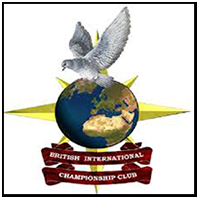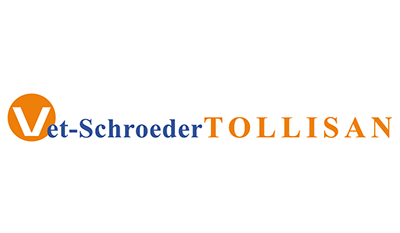Keith Mott
Writes about winning fanciers past and present
Gerard Schalkwijk of Lopik in Holland
Gerard Schalkwijk needs no introduction from me, as it is common knowledge through the world of pigeon racing that he is the son of the late, great Dutch champion, Ries Schalkwijk. His father, who passed away in 2009, was an ‘ace’ pigeon racer and of course was the founder of the famous Travipharma veterinary pharmaceutical company. Ries had pigeons at a very young age and two of his Uncles and a cousin raced pigeons, being specialist at the long distance. Gerard says, ‘the pigeon racing sport is in my blood’. Gerard started at the age of five, with his first loft being built out of orange boxes and after about three years the interest was still there, so he was given a proper loft. The young Gerard became a member of the local pigeon racing club in Ijsselstein, near Utrecht and was coached by his father, who taught him the important elements of the pigeons.
In 1985 Ad Schaerlaeckens wrote an article on the famous Karel Meulemans pigeons in the fancy press and the Schalkwijk partners decided to try some, and obtained descendants of ‘Kadet’, ‘Bourgske’, ‘Prins’ and ‘Schoon Donker’. Gerard told me, ‘we breed a lot of chocolate colour birds which have become very famous because they race so well and have put us on the top in Holland, with winning provincial Combines against thousands of pigeons. In 1988 we won with a Teus Versloot pigeon, called ‘Golden Wonder’ and he recorded 3rd open National St. Vincent (1045 KM) and the car. The year 1990 saw them purchase crossing material from John Van Boxmeer & sons, John and Harrie, of St. Oedenrode, who at that time were one of the premier lofts in Holland. Ries and Gerard purchased a round of youngsters from the main stock birds and these were based on the old Zoontjens family. This contribution worked well and they crossed outstandingly with the Meuleman pigeons. One Belgian pigeon was brought in through Eddy Janssen of Zandhoven in 2000 and that was from the world famous Dirk Van Dyck, and that cross proved to be a nice bonus. This new pigeon bought a new explosion of success in the Schalkwijk loft, with brilliant performance put up over the last ten years with the ‘Kannibaal’ and ‘Rambo’ bloodlines. In 2003 Gerard started to race long distance seriously and became 10th National Champion Long Distance of Holland.
2005 saw some very good performances put up, with the best by Ries at Pont St. Max, recording 1st, 2nd and 3rd (4,880 birds), 4th, 5th and 6th open NPO (16,888 birds). A fantastic performance against a big birdage! In 2006 Gerard brought in A. P. Overwater pigeons, a topper on the ZLU flights. The year 2007 saw Ries have some of his most brilliant success, becoming 1st Keizer Champion and then became very ill, and had to take a step back from the pigeons. That was the end of Reis’ pigeon success, but gifted good pigeons to other fanciers after that and enjoyed to see them have success with his stock. A good family friend of the Schalkwijks is my ol’ mucker, Kenny Wise of Isleworth and he has had wonderful success with their birds, including 2nd open London & South East Classic Club Alencon, 1st Federation Blandford and 1st Combine Bergerac. After a two year struggle with bad health, Ries passed away on 25th June 2009 and it was a massive loss for the Schalkwijk family.
The year of 2009 saw Gerard start to strengthen his team of pigeons and purchased stock birds from Frans Bungeneers of Belgium, who is a long distance specialist and winner of 1st National Barcelona in 2005. Rik Ros advised Gerard on the modern methods of long distance and through him has been using a totally new system for the long distance. Gerard now is mostly interested in the long distance and his breeding strains are A. P. Overwater, Frans Brungeneers and Rik Ros. Some of the premier racer in Gerard’s loft today are: ‘Reppe Ries’ 8th National Bergerac (850 KM) 13,200 birds, ‘Pau Doffer’ 3rd club, 15th NIC IJss, 47th Fond Pau (1039 KM) 2,000 birds, ‘Casanova’ 1st club, 69th National St. Vincent (1036 KM) 5,698 birds, 6th club Cahors (905 KM) 137 birds, 33rd club Brive (808 KM) 295 birds, 2nd ‘ace’ pigeon, 5th ‘ace’ pigeon overnight Fond Utrecht after three races and stopped for breeding, ‘De Tarbes’ 1st club, 10th NIC IJss Tarbes (1039KM), 7th club Pau (1039 KM), 9th club, 22nd NIC IJss Perpignan (1041 KM), ‘Goede Bontje’ 3rd club (191 birds), 71st Prov Cahors (905 KM) 3853 birds, 8th club (224 birds), 43rd Prov Perigueux (816 KM) 3425 birds, ‘Deep Purple 2’ 2nd Prov Morlincourt (300 KM) 14,500 birds, 6th club (191 birds), 64th Prov Cahors (905 KM).
I asked Gerard what system did he race his old birds on and can he give me full details of his feeding system, and how far did he race his old birds? His reply was, ‘My big interest, at this moment is Marathon fond (long distance). I race them on the nest (natural system) because I think I have more possibilities if I want to race with hens and cocks. Especially the hens are winning more easily when they have four or five day old babies in nest. I have 36 racing pairs and I always keep a high percentage yearlings so the performance level of the old birds must be very high.
The yearlings have to race two long distance races (about 800/900 km), the old birds race three long distance races each around 1000/1100 km and some of them go on to Barcelona. The race birds are paired up in March and I let them go down on eggs and throw the eggs away immediately, because I want to keep them in good feather.
One month before the first long distance race I pair them up to get them interested in the nest box by allowing them to have youngsters. Before that I have them on widowhood and they enjoy the weekly races in concours, this is to give them training and get the kilometres under their wings. Before the first long distance race they have already more then 1000km training under their wings! I use the darkness system on my old birds and I stop this three weeks before the first long distance race.
About the feeding system: Because my busy work for Travipharma I need to have a very simple system for my pigeons and that’s the natural system and off course I need to use a simple feeding system. When I pair up my racers I feed them all in a stone cup (pickstone) in the nest box. They get once a day feeded in that cup and they have to eat that whole cup empty in 24 hours. I have a special feeding mix “Rik Ros Mix” that contains two kind of racing mixture, P40, small sweet corns, little hennep and 1/3 part of this mixture is barley. The quantity of this mixture is very balanced and is just enough to keep them at a good weight. They get this mix all the way through too three days before the basketing day for a long distance race. For those three days I take the barley out of the mixture and give them, on the corn, Omega Olie mixture, with sheep fat included and in the water I give them Combi Fond or Forte Vita. One day before basketing I drop their noses with S.A.S. nose drops, too protect them against sticky slime, and give them more air for breathing and a faster orientation for coming home. In the drink water is Orni Tricho mixture against Trichomoniasis and respiratory problems like Mycoplasmosis’.
My next question to Gerard was: what are the families of pigeons you keep and how many stock pairs do you retain. What is the origin of your present team of birds and can you give details of any new introductions you have made? ‘I keep 24 pairs stock birds and about eight of them are for sprint up to 700 km races. I pair them up at Christmas time, as I am off work and have more time and I start lighting them 20 days before the pairing date, and then the have light from 17:00 – 21:00 clock. The feed mixture is Mariman Breeding Red Plata. And they can have plenty of it. A good pigeon must have in mine opinion a lot of plume, short for-arm, very good balanced body, mostly in a shape of a pear or an iron. The good long distance pigeon has strong muscles, but not to heavy in weight, the muscles are situated not to close to the “the sternum” and must feel flexible like a half pump up tire of a bicycle. For a sprint to middle distance pigeon, it must have harder muscle and position of it near the sternum. Those sprint pigeons can be a little bit bigger and deeper bone. The present family of pigeons I have are the ones of A.P Overwater for the ZLU-International races like Barcelona, Perpignan, Narbonne, Marseille etc. They are hard day pigeons and when the weather is very warm (30 Celsius) and the east wind is blowing (difficult for Holland) they are there to win. Latest purchases are from the Belgium National Barcelona winner Mr Frans Bungeneers (Cor de Heijde - Made) and from the National Bergerac plus St. Vincent winner, Mr Rik Ros, and these birds are special for the more fast going long distance events like Bordeaux races from 800/900 km. For the one loft races I keep the strain Meulemans, the old pure ones like Chocó’s and pencils, the strain of Dirk van Dyck Belgium via my friend Eddy Janssens also from Zandhoven. These plus the Zoontjes pigeons from Fam. Van Boxmeer - St.Oedenrode gave several 1st Nationals, Olympiade pigeons and Combine winners over the whole world. Mr Ken Wise from Middlesex is an example from England’s success’.
Some of the premier breeder in Gerard’s stock sections are: ‘300 Duifke’ daughter of ‘Super Koppel’ of the Aarden / Van Geel bloodlines. She is the dam of several top racers, including: ‘Casanova’ and ‘Goede Bontje’. ‘De Batenburg Doffer’ sire of ‘Goede Bontje’, ‘2006292’ 1st Bordeaux, 12th Brive, ‘2008065’ 6th Bordeaux, ‘2008064’ 41st Bordeaux, ‘Dure Look Alike’ sire of the ‘ace’ cock ‘De Tarbes’, ‘Magic Kannibaal’ Van Dijk and Meulemans bloodlines, and sire of the champion young bird ‘Deep Purple2’, ‘Ace Pigeon Half Fond’ Meulemans and Zoontjes bloodlines and dam of ‘Deep Purple 2’. Through the years many premier prizes have been won with Schalkwijk pigeon by other fanciers including: 1st National NPO Morlincourt (21,061 birds), 1st Niergnies (28,385 birds), 28th National Derby Ablis (8,000 birds), 1st Pt. Maxence (11, 070 birds), 1st National NPO Bourges (8,707 birds), 4th National NPO Pt. Maxence (16,500 birds), 1st Inter + National sector 3 St. Vincent (8,000 birds) – mother is out of ‘Moker’ Meulemans, 6th Alg + 6th ‘Ace’ pigeon one loft race Soest (500 birds), 2nd National Derby Ablis (8,000 birds), 5th National NPO Pt. Maxence (16,500 birds), 6th National NPO Pt. Maxence (16,500 birds), 7th National Derby Ablis (8,377 birds) and 2nd Semi National Morlincourt (14,449 birds).
How many young birds do you keep each season, Gerard, and can you give details of how you train, race and feed them. What system do you race your young birds? I keep normally about 80 youngsters because I think that it is very important to keep your racing loft young with a good number of yearlings. I train my youngsters every week and I race them also every week up to the last race, which is the National race 440 km. With this system I make sure that they have a lot of experience for the coming long distance races. Because of the long young bird season, I must use the famous darkness system. When I wean the youngster I gave them directly Travipharma’s Forte Vita in the drinker for 14 days, this is to avoid them back sliding of condition and protect them against young bird sickness. After this period they get the treatment three days a week for the whole season. I always see the super condition!!!! The best performance I achieve on widowhood, playing on the door, starting after three races, before that on the natural system. And I feed once a day Mariman Variamix. I make the mixture stonger or completer like the ‘Rik’ mixture without the barley for the last two days, including the basketing day’.
Do you like long distance or sprint racing? ‘I like every distance and have achieved almost everything on every distance, but I concentrate more and more on the very long distance. My middle distance, one day fond pigeons are moving their distance already and making performance up to Bordeaux about 850 km’. What has been your most thrilling experience in the sport? My first prize from Barcelona with only one pigeon entered in the race. But more exiting was winning the 3rd National St. Vincent (1045) with our ‘Golden Wonder’, winning the car and much more interesting prizes’.
Any views on the eye-sign theory? ‘It seems that I’m blessed with picking out the most interested racers or breeders in different lofts I have visited. I like to view the eye’s too because that gives me the only possibility to look in to the soul of the pigeon. I always follow the best theory’s, but then go for line breeding to make my family stronger. I like to breed from my better pigeons from that season, some times August late breds and for some years it seems that they produce very good racers, but I train them trough the winter time from every direction’. Have your tamest birds proved to be your best performers? ‘I have had very tame pigeons and also from my best pairs....but unfortunately they get lost often. So, no success’. What is your opinions of the moult, does it call for a special feeding? ‘Moulting time is a very important period because that is the period when your pigeons are winning the prizes for the next coming season. They should not be missing anything for this period so they need a very good moulting feed and Setrachol in the drinker for a few days, changing with the Herbal liquid mixtures like Bio 1, 2 and 3 from Travipharma’.
Gerard Schalkwijk’s results for the 2010 season are outstanding and read: ZLU International Long Distance – 99th Barcelona (1199 KM), 5th, 7th, 9th Perpignan (1041 KM), 90th, 98th, 121st Perpignan (1041 KM), 9th Marseille (966 KM), 1st, 10th Tarbes (1039 KM), 6th,12th,19th Bordeaux (885 KM), 3rd, 7th Pau (1038 KM), 47th Pau (1038KM). Long Distance Club: 8th, 17th, 26th, 26th Periqueux (816 KM), 1st, 9th, 13th, 17th St. Vincent (1036 KM), 69th National St. Vincent (5,698 birds), 6th, 18th Cahors (906 KM), 55th National Cahors (1862 birds), 30th, 32nd, 41st, 43rd Bordeaux (886KM), 3rd, 6th, 21st, 44th Cahors (906 KM), 308th, 552nd National Cahors (1,783 birds), Middle Distance Club: 13th, 16th, 40th, 53rd Nanteuil (351 KM), 1st, 2nd, 5th, 6th, 18th, 39th, 41st Nanteuil (351 KM), Young Bird Club: 1st, 5th, 9th, 10th, 12th, 14th, 15th, 16th,17th, 21st, 22nd, 23rd, 24th, 26th, 29th, 33rd, 34th, 36th, 37th, 39th Strombeek (126 KM) 173 birds, 20th, 21st, 22nd, 29th Laon (282 KM) 426birds, 1st,2nd, 3rd, 4th, 11th, 12th, 13th, 14th, 15th, 16th, 20th Laon (282 KM) 159 birds. Club Championship: 1st Keizer Champion ZLU races, 1st Champion nominated ZLU races, 2nd Champion not nominated ZLU races, 2nd over night long distance not nominated, 3rd Champion over night long distance nominated, 3rd Keizer Champion over night long distance, 5th ‘ace’ pigeon over night long distance. Fond Club Utrecht: 8th Super Keizer not nominated ZLU races, 10th Super Keizer nominated ZLU races. A wonderful tally for one season!
In our conversation Gerard told me, in his opinion, ‘health is the most important thing for every living being and a good foundation for further achievement of your animal. He who strives for the best results will do anything for a good foundation’. I asked him to tell me about his Travipharma pigeon products company and he told me, ‘Travipharma is an independent Dutch veterinary pharmaceutical family owned company, who place original and quality produces on the market. Our products are used all over the world with enormous success and top fanciers race with our successful racing systems. My late father, Reis, was one of the founders of the company some 40 years ago and in 1988, just after I had graduated, my father and I took over Travipharma. After several good years Reis stepped out in 1991 and now the company is run by me and my wife, Katiuska, supplying products to some 50 counties around the world.
























